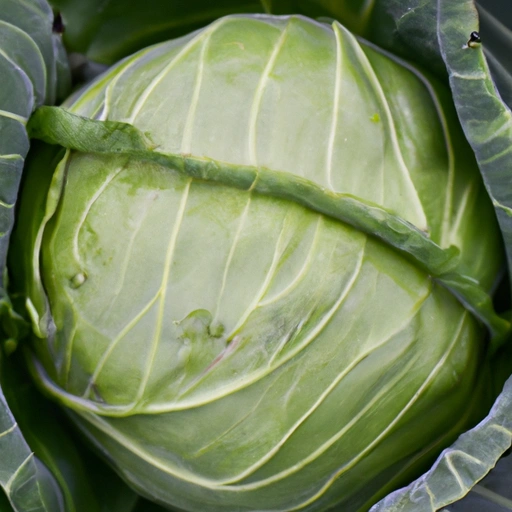White Cabbage
Description

White cabbage is a leafy vegetable known for its dense, tightly packed leaves and pale green color. It is a cruciferous vegetable that belongs to the Brassica family, which includes broccoli, cauliflower, and kale. Renowned for its durability and storage life, white cabbage is a popular choice for culinary uses across various cuisines. When preparing white cabbage, both metric measurements such as grams and milliliters, and American units like cups, tablespoons, and ounces are commonly used.
Common uses
White cabbage is commonly used in salads, coleslaws, soups, stews, and as a wrap for fillings. It can also be fermented to make sauerkraut or kimchi, depending on the culinary tradition.
Nutritional value
Calories
White cabbage is low in calories, with approximately 25 calories per 100 grams or 3.5 oz.
Protein
It contains about 1.3 grams of protein per 100 grams or 3.5 oz.
Fat
White cabbage is very low in fat, with just 0.1 grams per 100 grams or 3.5 oz.
Carbohydrates
There are about 6 grams of carbohydrates in 100 grams or 3.5 oz of white cabbage, of which 3.2 grams are dietary fiber.
Vitamins
It is a good source of Vitamin C and Vitamin K, with a 100 gram or 3.5 oz serving providing more than 60% of the Recommended Daily Intake (RDI) of Vitamin C and about 85% of the RDI of Vitamin K.
Minerals
White cabbage contains essential minerals such as potassium, magnesium, and calcium.
Health benefits
Thanks to its nutrient profile, white cabbage offers various health benefits. It supports immune function, assists in bone health, and has antioxidant properties that may protect against certain diseases. The high fiber content aids in digestion and may contribute to heart health.
Potential risks
While white cabbage is generally safe for consumption, it contains vitamin K, which can interfere with blood-thinning medications. Additionally, some individuals may experience gas or bloating from the high fiber content. People with thyroid problems should also consume it moderately as it contains goitrogens, which can affect thyroid function.
Common recipes
White cabbage is a key ingredient in dishes like German sauerkraut, Polish golabki (stuffed cabbage rolls), and Irish colcannon (mashed potatoes with cabbage).
Cooking methods
It can be eaten raw, steamed, boiled, sautéed, or fermented. When cooking, white cabbage is often chopped or shredded, and can be cooked until tender or left slightly crisp based on the recipe requirements.
Pairing with other ingredients
White cabbage pairs well with a variety of meats, including pork, beef, and chicken. It also complements other vegetables like carrots, onions, and bell peppers, and can be seasoned with herbs such as dill, parsley, or thyme. For a tangy twist, white cabbage can be dressed with vinegar or lemon juice.
Summary
White cabbage is a nutritious and versatile vegetable with historical significance in many cultures. Its low calorie and high nutrient content make it a healthy addition to a variety of dishes. With its broad culinary applications, from raw salads to comforting cooked meals, white cabbage is a valuable ingredient for food lovers and chefs around the globe.